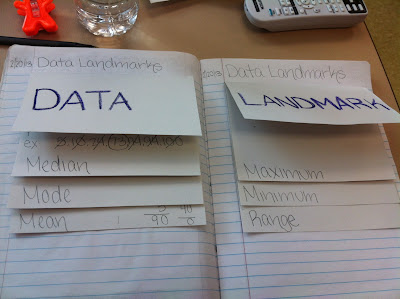 |
| Each student got to pick their survey question and had to survey 20 people |
Next, we created a frequency chart to organize the data we collected. Because we just finished our unit on fractions, we were able to change our totals into fractions, then percents. This allowed us to display our data in a bar graph as well as a circle graph. To create the circle graph, we colored a strip of centimeter grid paper in the same fashion we colored our bar graph. For example: in the picture below, Allison colored 12 squares purple because 12 people voted for math as their favorite subject (YAY!!!!), 6 squares pink for science, and so on. We cut the strip out and taped the ends together to create a circle, and made our circle graph based on the outer edge of the circle. That way, the regions in the circle graph were accurate. It also gave us a great visual for how to create a circle graph. The result is below:
"It is more likely to be warmer in the afternoon than the morning."
"The sun doesn't have time to warm up the earth at 8 a.m. in February, but by 3 p.m. it had a chance to warm everything up."
"Ohio weather is really unpredictable, Ms. McHugh!"
Welcome to Ohio, kids! Allison's notebook is below:






.JPG)
.JPG)
.JPG)
.JPG)




